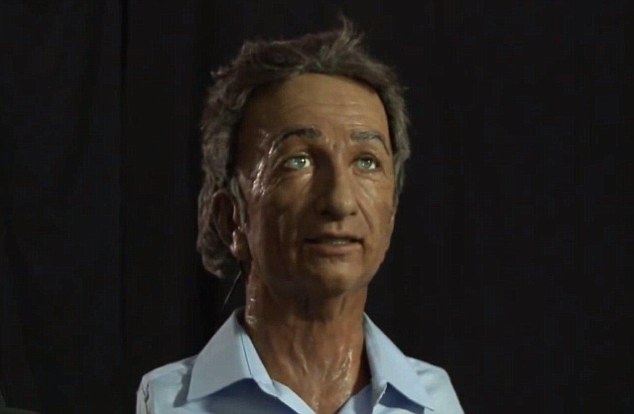‘Emotional’ robots have taken a step closer to reality, thanks to a mind-reading machine capable of mimicking human feelings, according to Daily Mail.
The robot, named Charles, is equipped with cameras and software that can record and analyse a person’s facial expressions.
This information is then relayed to artificial muscles on the robot, which can replicate facial movements associated with a variety of moods.
Experts hope that the breakthrough will help robots respond to subtle cues revealed by people during a conversation.
The development could aid the creation of robots that can think and feel like people, which some researchers claim could be a reality within the next decade.
Charles is the creation of Professor Peter Robinson, who worked with Hanson Robotics to design the machine.
The robot is equipped with specialised software that can read people’s faces, including movements of the eyebrows, jaw, mouth and elsewhere, recorded by an on-board camera.
Charles then recreates their expression, mirroring their muscular movements using its own mechanical servomotors.
The whole process takes around two to three seconds.
Professor Robinson said: ‘We’ve been interested in seeing if we can give computers the ability to understand social signals, to understand facial expressions, tone of voice, body posture and gesture.
‘We thought it would also be interesting to see if the computer system, the machine, could actually exhibit those same characteristics, and see if people engage with it more because it is showing the sort of responses in its facial expressions that a person would show. So we had Charles made.’
Professor Robinson says Charles came about thanks to research into emotionally intelligent computer interfaces.
However, he does admit that his creation does need some work to improve his expressions.
‘Charles is remarkably realistic, the prosthetics are very good, but the motors are just not like human muscles,’ Professor Robinson added.
‘Our control programmes are just not quite fine enough and the monitoring of the human face we’re using at the moment is just not quite good enough and so it looks unnatural.’
This is not the first time that robots with lifelike faces have been created.
Roboticist David Hanson, who is responsible for building Charles, envisions a future in which AI-powered robots evolve to become ‘super-intelligent genius machines’ that might help solve some of mankind’s most challenging problems.
In May, Dr Mark Sagar, said that robots that can think and feel like people could soon be living among us.
He claimed responsive robots could be a common sight in businesses and homes around the world within the next ten years.
He has used computer graphics to develop stunning renderings of virtual people, that can mimic natural facial movements like blinking and smiling.
But behind this attractive exterior is advanced software, a type of virtual nervous system, that can learn and even mimic human emotions.
N.H.Kh

